About The Data-Sitters Club#

First, we should tell you about The Data-Sitters Club, how it works, and who we are. It all started one day when Quinn Dombrowski was on vacation in Las Vegas and started getting nostalgic about Ann M. Martin’s iconic series about girlhood in the upper-middle-class American suburbs of the 1990s. There’s been very little scholarship written on the series, and Quinn started wondering what you could get from applying digital humanities computational text analysis tools and methods to that corpus. And it’d be even better to share those findings alongside a detailed description of how you go about the process of doing the text analysis, spelling out all the steps and decisions along the way! Quinn found some friends on DH (digital humanities) Twitter who wanted to join, and together, we started The Data-Sitters Club.
The Data-Sitters (Main Series)#
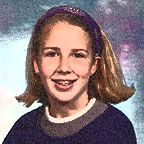
Lee Skallerup Bessette (Georgetown University) has long, dirty blond hair that she now dyes a deep shade of red (her current favorite color; it used to be purple, as you can see from the photo). She used to read The Baby-Sitters Club books so fast, without breaking the spine, so she could return them to the bookstore once she was done for a full refund, to save for the next one that came out a month later. She’d have been a Kristi, too loud and athletic. And when Mallory stumbled into the picture, labeled a “spaz,” Lee finally found someone else in the books she could really relate to. She has a PhD in Comparative Literature, focusing on the translation of Québécois literature. She now works at Georgetown University, working in digital pedagogy. Working on the Data-Sitter’s Club is an opportunity to use her PhD research and knowledge about Québécois culture, something that she never thought she would ever do again in any sort of professional capacity, and her love of BSC.

Katia Bowers (University of British Columbia) has wavy-curly light brown hair, brown eyes, and glasses. She is an Associate Professor at the University of British Columbia, and her research focus is on nineteenth-century Russian literature, particularly Dostoevsky. She’s interested in questions about genre, narrative, and authorship. Katia most readily identifies as a kind of Mary Anne-Stacey hybrid. Like Mary Anne, she is quiet and shy, likes genre fiction and classical music, prefers listening to others to speaking herself, and didn’t own jeans until she was 12, but like Stacey she feels most comfortable in an urban setting.
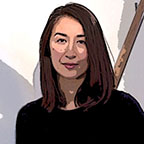
Maria Sachiko Cecire (Bard College) is half-Japanese and half-Italian, and has dark brown hair, brown eyes, and olive skin that turns a deep toast color in the summer. She is an Associate Professor of Literature at Bard College, and is so into children’s literature that she wrote a book about it! It’s called Re-Enchanted: The Rise of Children’s Fantasy Literature in the Twentieth Century. Maria is also the founding director of the interdisciplinary curriculum and center in Experimental Humanities at Bard, which focuses on how technology mediates what it means to be human. She is interested in how people read, think through big humanities questions, and learn — and especially what this means for people and approaches that have been historically excluded from academia. She loves Claudia for her heritage, creativity, and style, but can also relate to Kristy’s passion for starting things and Dawn’s love of healthy food and warm weather!
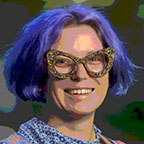
Quinn Dombrowski (Stanford University) is short (about the size of a 10-year-old), with short blue and purple hair (since the pandemic), off-the-wall glasses, and light-blue eyes that match their three kids’. Quinn works as an Academic Technology Specialist in the Division of Literatures, Cultures, and Languages at Stanford University, supporting non-English DH scholarship. Quinn identifies as non-binary in English, but doesn’t have any preferences about pronouns (just gender-neutral nouns, like “person” and “parent”). The Data-Sitters Club is Quinn’s first text analysis project in English, AKA “easy mode”. Usually, “not English” is the one major unifying thread in the projects Quinn works on – not counting the literal threads Quinn gets tangled up in at the Textile Makerspace. Quinn is something like a profoundly unathletic Kristy, if you substitute computers for sports, and add Claudia’s fashion sense.
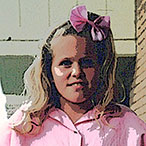
Anouk Lang (University of Edinburgh) was introduced to The Baby-Sitters Club books in sixth grade in Sydney, when their candy-bright spines lit up the shelf of sensible whites and creams that made up the rest of the class lending library, and the race to beat everyone else through the series was on. Anouk is probably closest to being a mixture of Mallory’s glasses-wearing awkwardness and Dawn, always figured as geographically other. Her Australian twang has faded after 20-odd years in the UK into a more generic learnt-English-somewhere-other-than-England accent. She has no hopes of keeping up either with Claudia’s barrette and earring game, or with Quinn’s sartorial creativity in the DH-dress department, but does pull out her beloved Bernina sewing machine from time to time to make things, most recently a black plush Toothless dragon.
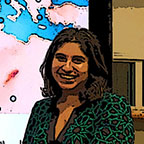
Roopika Risam (Salem State University) has beautiful, clear, Bit-O-Honey-colored skin and black hair, which she wears in a graduated bob with blonde highlights. Everyone calls her Roopsi. She’s an Associate Professor of Secondary and Higher Education and English at Salem State University. Roopsi is a computational textual analysis skeptic, a secret subplot of her book New Digital Worlds: Postcolonial Digital Humanities in Theory, Praxis, and Pedagogy, but she loves digital humanities and thinks it has a lot of possibilities for African diaspora, postcolonial, and critical ethnic studies. She is also a walking encyclopedia of Baby-Sitters Club knowledge. Roopsi wants to be Stacey but sympathizes with Jessi’s experience with microaggressions and Claudia’s inferiority complex with her sister.
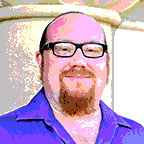
Mark Algee-Hewitt (Stanford University) is an Associate Member of the Data-Sitters Club, just like Logan Bruno. He has a goatee, red hair that he wears in a ponytail, and sense for fashion that makes him the Claudia Kishi of male academics. Mark has an amazing assortment of colorful and interesting sports coats, and a penchant for creative cowboy boots. He’s an Assistant professor of English at Stanford University and Director of the Stanford Literary Lab. Mark babysat growing up in Nova Scotia, with an hourly rate that would’ve worked out to $\3.50 USD.
Multilingual Mystery Data-Sitters#
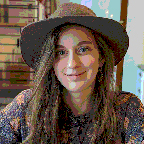
Isabelle Gribomont (University of Liverpool) grew up in Belgium and is our Belgian / French Data-Sitter. Isabelle has long, untidy, light-brown hair and green-ish eyes. She aspires to Claudia’s fashion sense but is most often found in lounge clothes and sporting a ginormous top-knot.
Junior Officers#

Cadence Cordell has short strawberry blonde hair, blue eyes, and glasses. She’s working towards a Bachelor’s Degree in History and Spanish at Mount Holyoke College and plans to pursue a Master’s degree in library science after she graduates. While she didn’t grow up reading The Baby-Sitters Club (instead obsessing over Percy Jackson, Harry Potter, and other fantasy and sci-fi series), she strongly relates to Mary Anne’s quiet, shy personality; organization skills; and tendency to cry a bit too often.
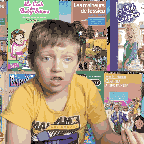
Sam Dombrowski is in third grade, nearly as tall as Quinn, and has brown hair and blue eyes along with a California tan like Dawn after a summer in Palo City. He loves the recent She-Ra remake, Magic: The Gathering, and playing computer games with his uncle Matt, who lives with him. He considers himself a serious gamer, and takes after Quinn in a lot of ways. Sam has been one of the youngest volunteers capturing Ukrainian cultural heritage websites as part of SUCHO.
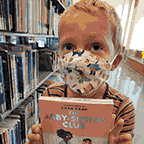
Paul Dombrowski is in first grade, has a lighter complexion and hair, but the same blue eyes as Quinn and Sam. He loves to read, and even though he’s only in first grade, he already reads just about everything his big brother does. He’s a big fan of cheese pizza, snakes and the History Oversimplified YouTube videos, and takes after his dad. Paul is not a big fan of being roped into whatever nonsense scheme his parent has come up with at any given moment, but he draws amazing monsters to send as a morale boost for friends in Ukraine.
Guest Data-Sitters#

Dainy Bernstein (University of Pittsburgh) has short, dark brown hair and brown eyes. Ey bounces back and forth between big-picture ideas and detail-focused ideas, sometimes writing about an entire collection of books and sometimes writing three pages about a single paragraph. Eir childhood and adolescence was spent in Brooklyn, New York, reading as many books a week as the public library let er borrow. Dainy writes about ultra-Orthodox Jewish children’s literature and is the editor of the recently-published collection of essays Artifacts of Orthodox Jewish Childhoods. Read more in DSC #15: Little Miss California Stereotype… and the BY Times.
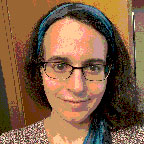
Elisa Beshero-Bondar (Penn State University, the Behrend Campus) is 3/4s Lebanese and 1/4 Irish. She has thick wavy black hair that she usually pulls back from her face, and looks very Mediterranean with an olive complexion and big brown eyes behind spectacles. Like Jessi in Jessi’s Secret Language, she started learning as much as she could about text encoding after working with a student who couldn’t see and needed to read poetry with her fingers on a fascinating braille monitor. Elisa loves all things geeky about electronic documents and the Text Encoding Initiative because it’s a super supportive community that works together around the world and cares deeply about curating metadata and document data modeling. She tends to get involved in lots of projects at once and enjoys hanging out as a consultant with the Data-Sitters Club; read more in DSC #5: The DSC and the Impossible TEI Quandaries.

Heather Froehlich (Penn State University) has wavy-curly red hair and a more than passing similarity in style to the famed missing Waldo. She has an affinity for stripes, and like the babysitters spent her tween years in New England. She spends a lot of time pondering computers and how they understand language. She spends even more time thinking about what people’s brains can do with the resulting data, because as she will be the first to tell you, “computers are dumb boxes of plastic and metal”. In her position as Literary Informatics Librarian at Penn State University, she has the opportunity to consult with a range of scholars in diffuse fields about all the ways people can work smartly with the data computers give us and how to get them to give it to us. She loves a good corpus. Read more in DSC #10: Heather Loves Principal Component Analysis!

Annie K. Lamar (Stanford University) has warm gray eyes and an affinity for purple clothing. She has long hair that is almost always twisted and copiously pinned on the top of her head. She studies ancient languages and artificial intelligence, which– although it sounds quite serious– often results in the creation of chat bots so she can talk to her favorite ancient authors. Read more about what we learned from Annie about machine learning in DSC #9: The Ghost in Anouk’s Laptop.
Matthew Sag (Loyola University Chicago) has friendly blue eyes, a diamond shaped face, and an Australian accent smoothed over from 20 years living in the United States. He had blonde floppy hair like John Denver when he was a kid, but now he looks more like a clean shaven Jude Law. He is a law professor at Loyola University Chicago School of Law and a leading expert on copyright law and fair use – just the guest data-sitter we needed in DSC #7: The DSC and Mean Copyright Law!

Anastasia Salter was definitely not BSC material growing up in the 90s, as they spent much more time with books and video games and no time at all with children. They were the kid who knew how to debug a Soundblaster 16 audio problem while installing DOS adventure games, and that love of narrative games became the major focus of their research as a (sort-of) grown-up. Currently, they run University of Central Florida’s Texts & Technology PhD program, which is dedicated to research for people who want to understand everything at the intersection of books and computers.
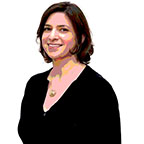
Rachael Samberg (UC Berkeley Library) has brown hair, some of which she occasionally bleaches and dips in her favorite color (which is purple). She can have a basic conversation in Finnish. And she is perpetually covered in cat fur because she has the sweetest and funniest kitty, and Rachael and her kitty practice nightly gene-splicing…I mean, er… are best friends. Rachael uses her law degree to promote justice (!!!) and innovation (!!!) as the director of UC Berkeley Library’s Office of Scholarly Communication Services. Confused? Basically, if anyone on the UC Berkeley campus has questions about copyright, licenses, privacy, or ethics in their research, scholarship, or teaching, Rachael’s office can help. Learn more in DSC #14: Hello, DMCA Exemption!
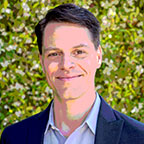
Erik Stallman (Berkeley Law) has brown hair that is turning gray and brown eyes that are mostly staying brown. He wears an assortment of drugstore reading glasses because he loses his glasses a lot. He is the Associate Director of the Samuelson Law, Technology & Public Policy Clinic at Berkeley Law. He works with law students to help researchers and other folks because copyright law sometimes solves a problem for some people by creating problems for other people. Learn more in DSC #14: Hello, DMCA Exemption!
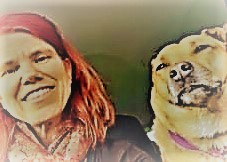
Shelley Staples (University of Arizona) has blondish-brown hair but usually changes it up to pink at least once a year. She’s a corpus linguist who did not grow up reading The Baby Sitter’s Club, but did read Nancy Drew (the older versions) just like Claudia Kishi. She likes helping students think about how to talk to computers and has compiled a toolkit with her research team, the Corpus and Repository of Writing, to help folks create their own corpora. In her former life, she was an early DHer at University of Virginia. She enjoys trail running, biking, and hiking with her dog, Ziggy. Learn more in DSC #19: Shelley and the Bad Corpus!
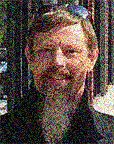
Jeff Tharsen (University of Chicago) is like a cross between a Viking and a Confucian scholar. He’s tall, with dark eyes and a long beard that once was blond and is now turning an off-white color like Mary Anne’s blouses. He’s the University of Chicago’s resident expert in humanities-based research computing but spends much of his time thinking about sound systems in premodern rhetoric and poetry, social justice and savage inequities, playing guitar like Rico from the California Diaries series, Minecraft mods, and finding infinite combos for his Magic: the Gathering deck builds. Read more about what he’s been up to with machine learning in DSC #9: The Ghost in Anouk’s Laptop.
